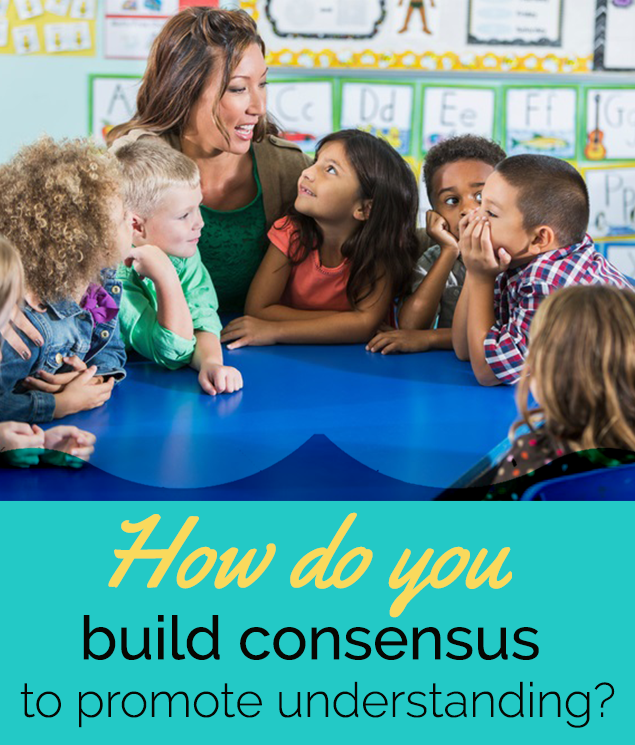Form a Consensus-Decision Making Strategy in the Classroom
Posted by Network Support · Leave a Comment
What is the Form a Consensus-Decision Making Strategy?
The Form a Consensus-Decision Making Strategy is a means to encourage peer discussions among students. The goal is for students to form a consensus to proposed questions by discussing, analyzing and breaking down the subject or topic.
According to Vygostsky, Smith and Wilhelm (2006)*, the consensus-decision making process encourages students to participate in meaningful interactive conversations and discussions with their peers. These interactions, provide students with an opportunity to critically analyze and rationalize a topic, idea or thought from different points of view.
Simply put, the consensus-decision making process helps students make sense of a topic through interaction with their peers. To facilitate learning through this process,one can incorporate the Form a Consensus-Decision Making Strategy in the classroom.
How to use it?
There are three parts to this strategy, each encouraging individual, small group and whole class participation. Typically, a group reaches a consensus by discussing and debating the topic presented. The same principle is followed in this strategy. Teachers can incorporate the Form a Consensus-Decision Making Strategy by following the steps below:
1.Preparation:
Select a text material to implement the Form a Consensus-Decision Making Strategy. Using the content as a reference, write down questions that will form the crux for the discussion. The questions can be framed to stimulate a deeper reflection of the topic or to explore the topic in relation to the real world.
2. Individual Reasoning.
Write the questions on the board and instruct students to write down their opinions, ideas or thoughts on each statement. They can be allotted a duration of about 10 minutes to complete this task.
3. Small Groups
Place students into small groups of approximately 3 members. Instruct them to share their individual opinions and to reach a consensus for each question. Encourage students to analyze, discuss and think about the statement from each student’s point of view. Encourage them to support their claims using examples from the content or even from real life. Teachers can supervise and assist with these group discussions. When groups are not able to reach any consensus, teachers can help by altering the phrasing of the question to lead the discussion.
4. Whole Class Activity:
After every group has come to a consensus on the questions, the strategy is continued as a whole class activity. Each student group is asked to select a representative to present their group decision to the rest of the class. The teacher can take note of each group’s answers on the board.
A class-wide discussion is then initiated, focusing more on the questions that had different responses. Students are asked to support or dismiss each other’s opinions using valid arguments and references from the content.
Teachers can help students come to the correct consensus if the class is still having trouble agreeing.
This strategy is beneficial in many ways as it promotes student participation, deeper understanding, analytical thought processes and cooperative learning.
* Smith, M. W., & Wilhelm, J. D. (2006). Going with the flow: How to engage boys (and girls) in their literacy learning. Portsmouth, NH: Heinemann.
Like this article for teachers?
Browse the Professional Learning Board COURSE CATALOG to find related online courses for teachers in your state. Professional Learning Board is a leading provider of online professional development classes that teachers use to renew a teaching license or renew a teaching certificate.





